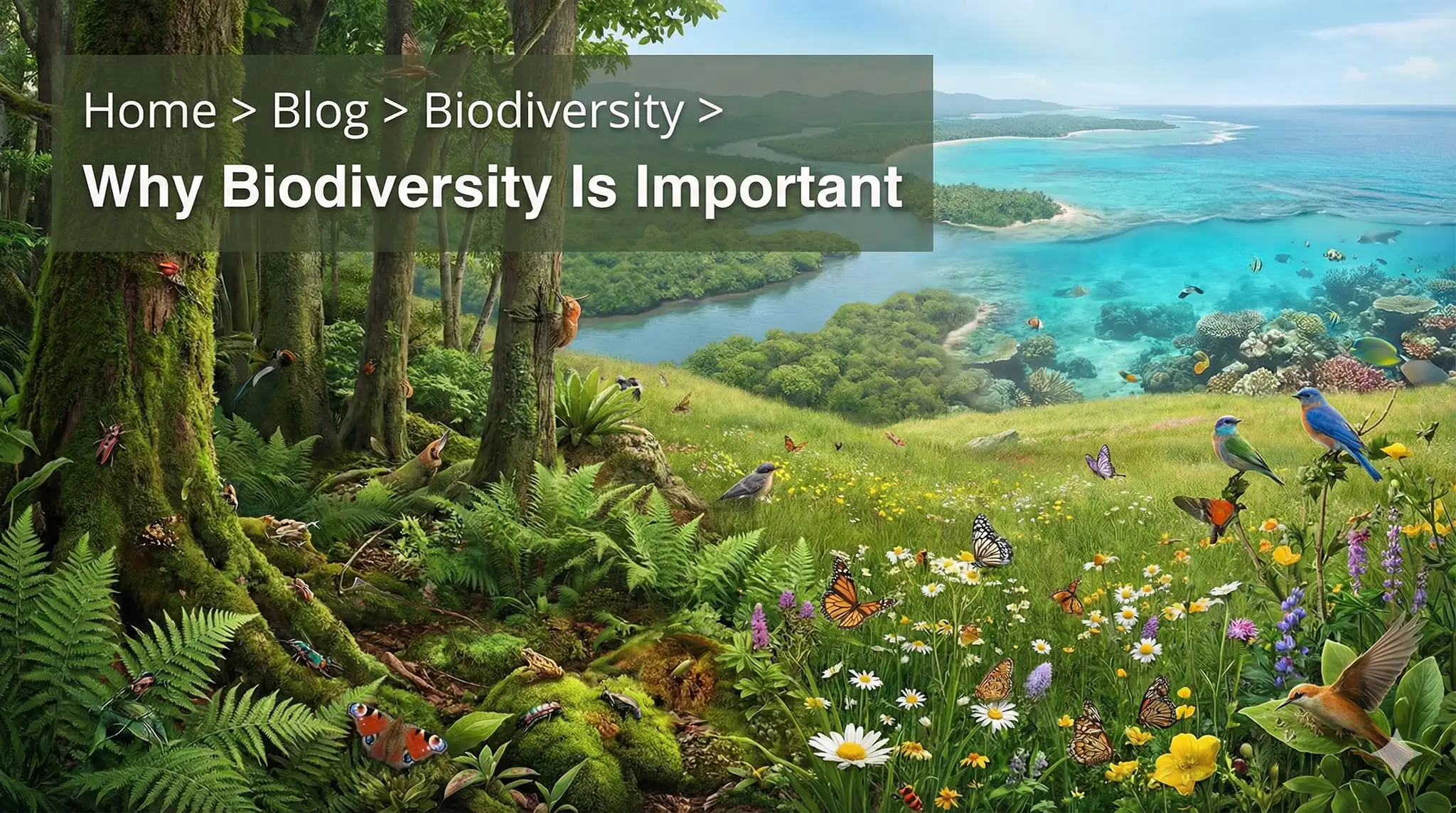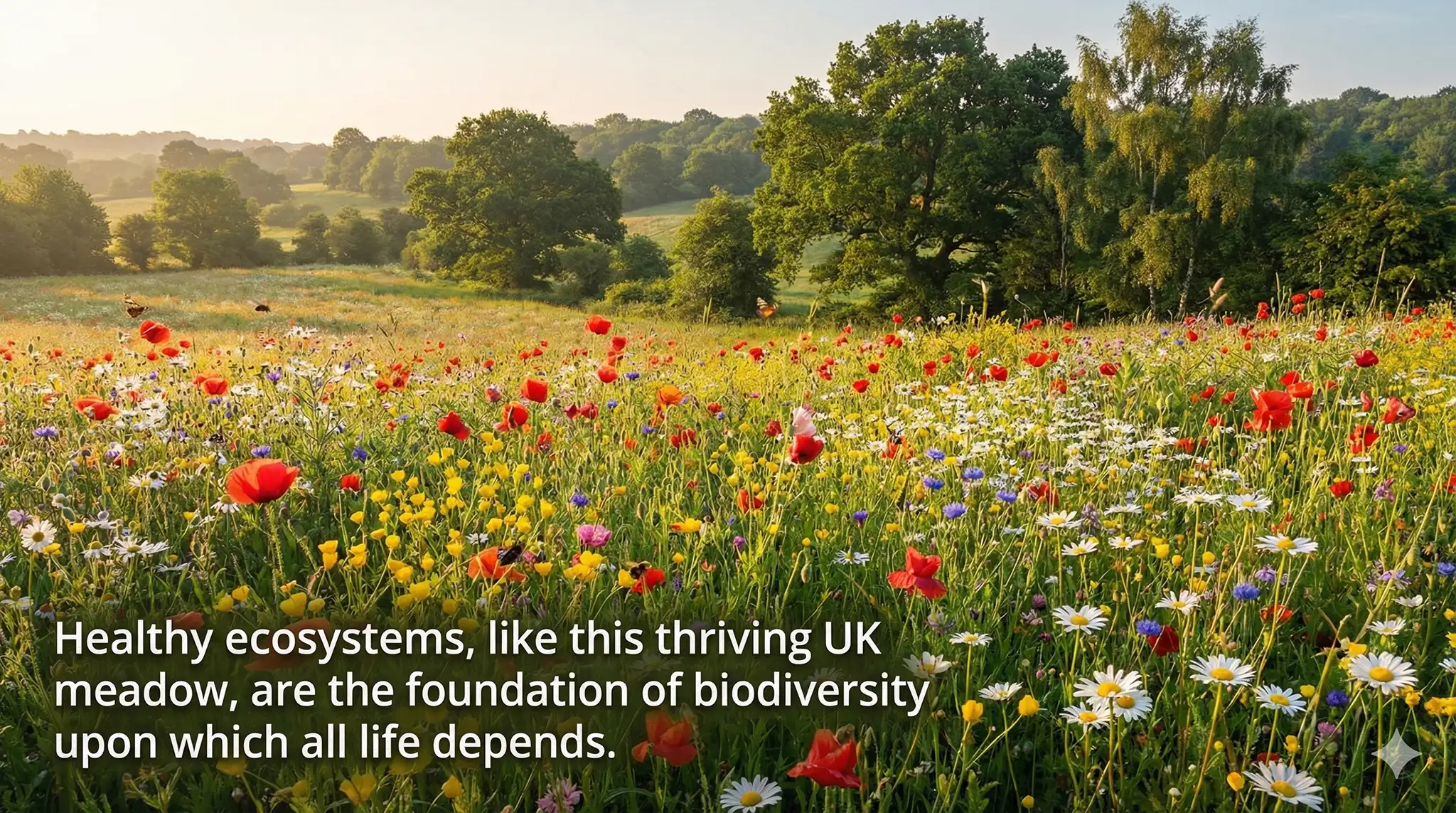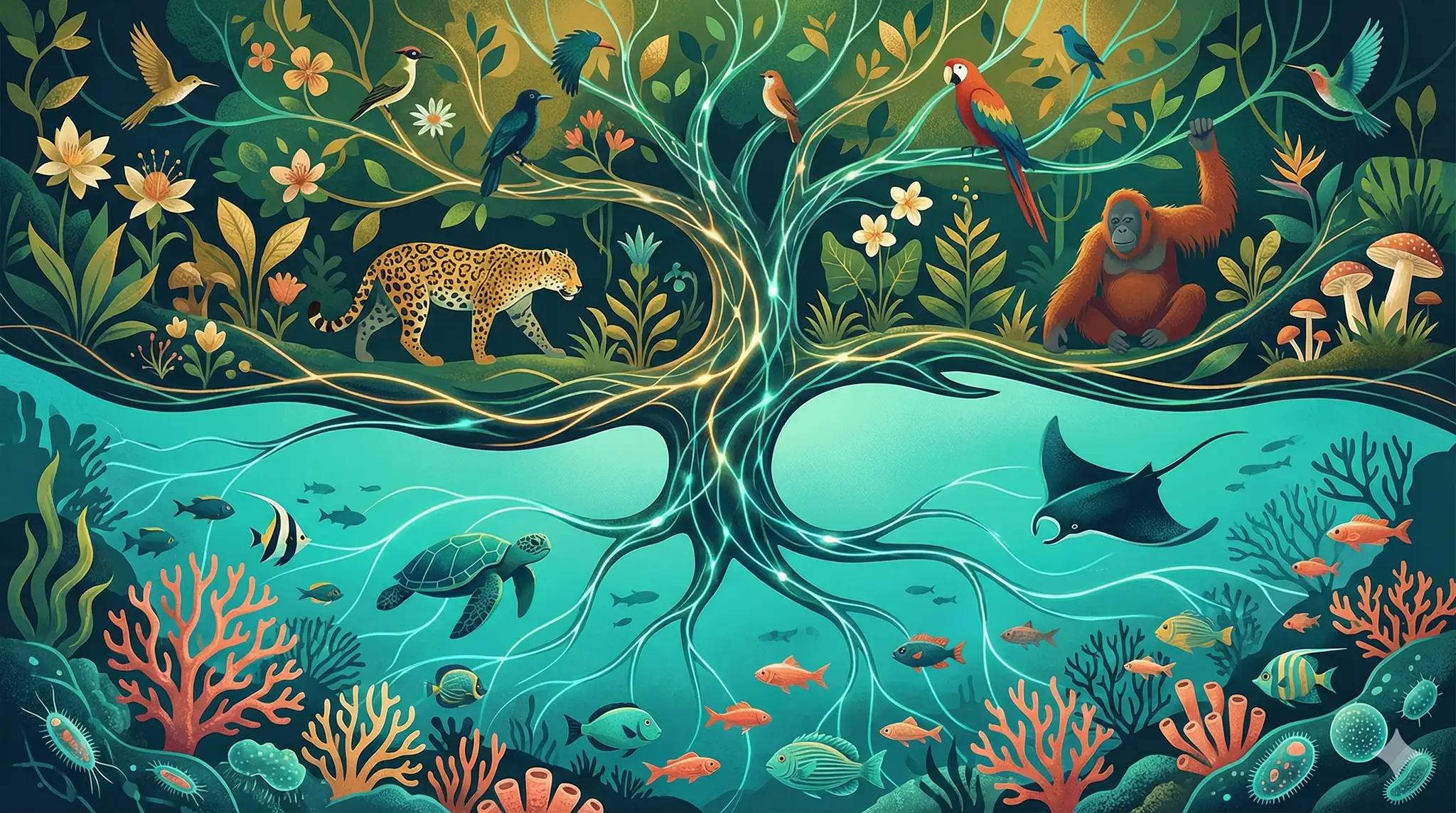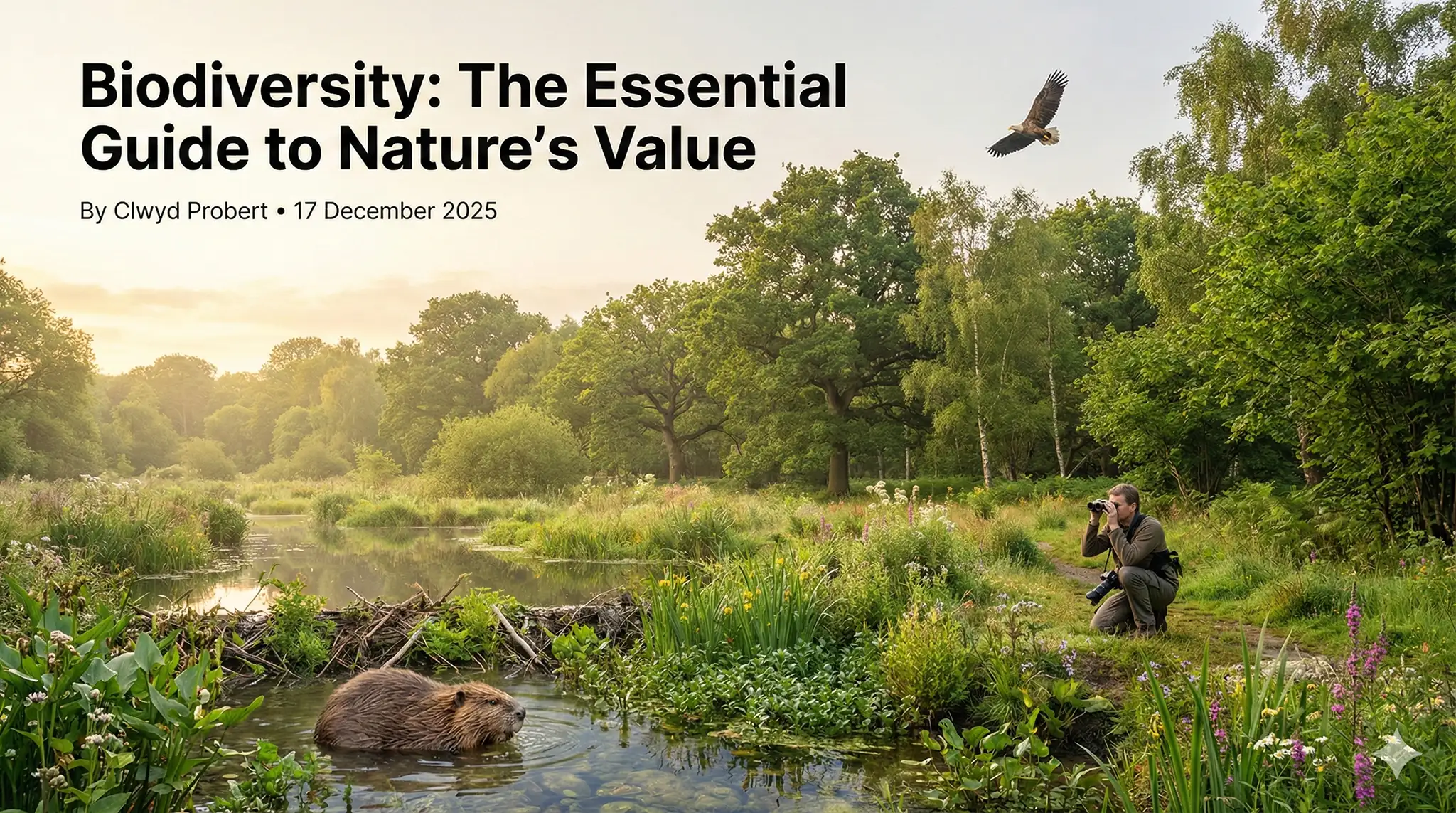Biodiversity Collapse: Understanding the Impending Crisis
Introduction to biodiversity collapse
The world is facing a biodiversity crisis, with species extinction rates greater than those experienced during the mass extinction of dinosaurs. This crisis has far-reaching impacts on the environment and human society, and it is essential to understand the causes and consequences of this crisis in order to take the necessary steps to address it.
Impact on the Oceans
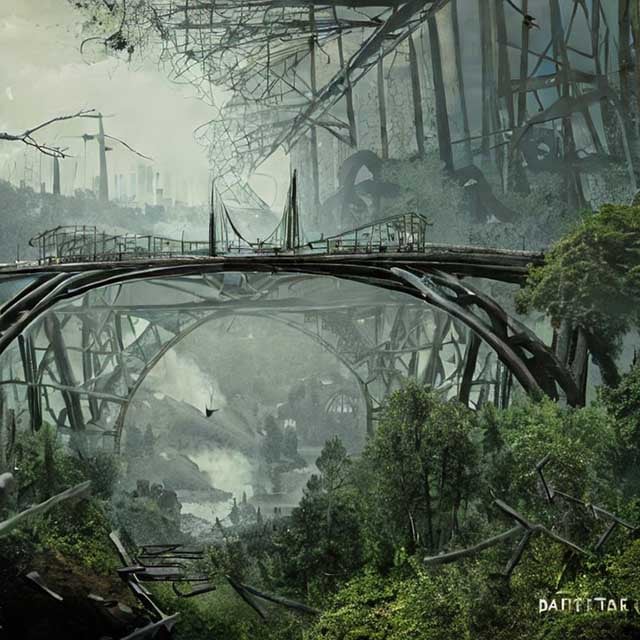 The decline of marine life, the loss of 50% of terrestrial wildlife and 90% of whales and sharks have had a devastating impact on the oceans. Whales play a crucial role in the ocean's ecosystem by supporting phytoplankton and krill populations, while sharks act as apex predators, regulating the entire marine food chain. The disappearance of these species has caused the food chain to destabilize, with the base being phytoplankton.
The decline of marine life, the loss of 50% of terrestrial wildlife and 90% of whales and sharks have had a devastating impact on the oceans. Whales play a crucial role in the ocean's ecosystem by supporting phytoplankton and krill populations, while sharks act as apex predators, regulating the entire marine food chain. The disappearance of these species has caused the food chain to destabilize, with the base being phytoplankton.
Threats to Phytoplankton Phytoplankton is micro vegetation that absorbs CO2 and produces oxygen, with over 50% of our oxygen estimated to come from the oceans. However, the oceans are facing multiple other threats that are reducing the amount of phytoplankton, including plastic waste, acidification, dead zones, oil spills, and noise pollution. These factors prevent marine life from mating and feeding, leading to a decline in phytoplankton populations and less CO2 absorption.
Impact on Air Purification The oceans play a crucial role in purifying the air, but their ability to do so is being compromised by the decline in phytoplankton and the increasing pollution in the world. The loss of whales and sharks and the multiple other threats to marine life have led to a reduction in the amount of phytoplankton in the oceans, resulting in less CO2 absorption and a decline in the oceans' ability to purify the air.
Examples of Threats to Marine Life
- Plastic waste: Over 8 million tons of plastic enter the oceans each year, causing harm to marine life and their habitats.
- Acidification: Increasing CO2 levels are causing the oceans to become more acidic, which is affecting the growth and survival of marine species.
- Dead zones: Areas of low oxygen in the oceans are caused by excess nutrients from human activities, leading to the death of marine life.
- Oil spills: Oil spills can cause widespread harm to marine species and their habitats, as well as harm the food chain.
- Noise pollution: Marine mammals, such as whales, rely on sound to communicate and find food, but noise pollution from human activities can prevent them from doing so, leading to a decline in their populations.
Impact on Land Biodiversity
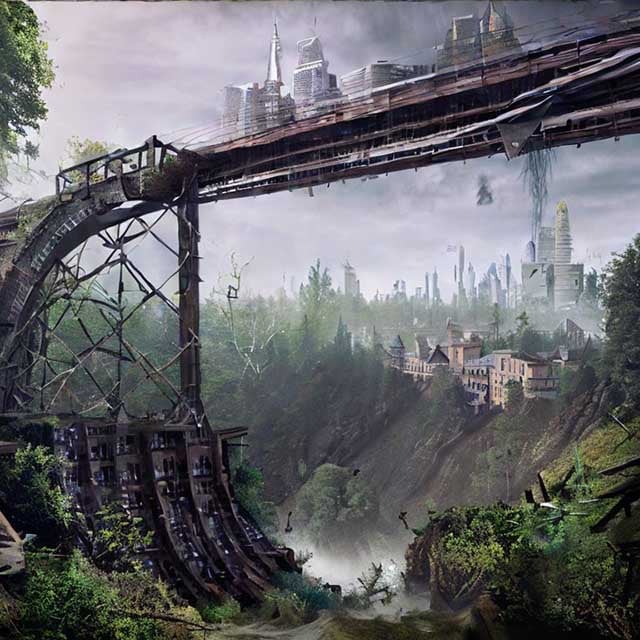 The decline in land biodiversity is a serious issue that demands attention, as the use of pesticides, fungicides, and herbicides in agriculture have led to a significant loss of soil life. Over the past 60 years, nearly 95% of soil life has been lost, which has had a profound impact on the health and genetic diversity of crops. The practice of ploughing fields for production purposes disregards the vital role of soil in supporting plant growth, leading to unhealthy and genetically uniform crops.
The decline in land biodiversity is a serious issue that demands attention, as the use of pesticides, fungicides, and herbicides in agriculture have led to a significant loss of soil life. Over the past 60 years, nearly 95% of soil life has been lost, which has had a profound impact on the health and genetic diversity of crops. The practice of ploughing fields for production purposes disregards the vital role of soil in supporting plant growth, leading to unhealthy and genetically uniform crops.
Terrestrial mammals, such as wolves, are also facing challenges as their habitats are being destroyed and encroached upon by human populations. This reduction in space has forced these animals to live in close proximity to humans, leading to conflicts and often resulting in their killing. For example, the wolf, known for its vast territorial range, is now confined to small areas and is killed at a rate of 40 per year in a population of only 300.
Such practices not only harm individual species but also contribute to the overall decline in land biodiversity, putting the future of many species at risk. It is crucial that we take action to protect and conserve land biodiversity for the sake of both wildlife and future generations.
Impact of Energy Addiction
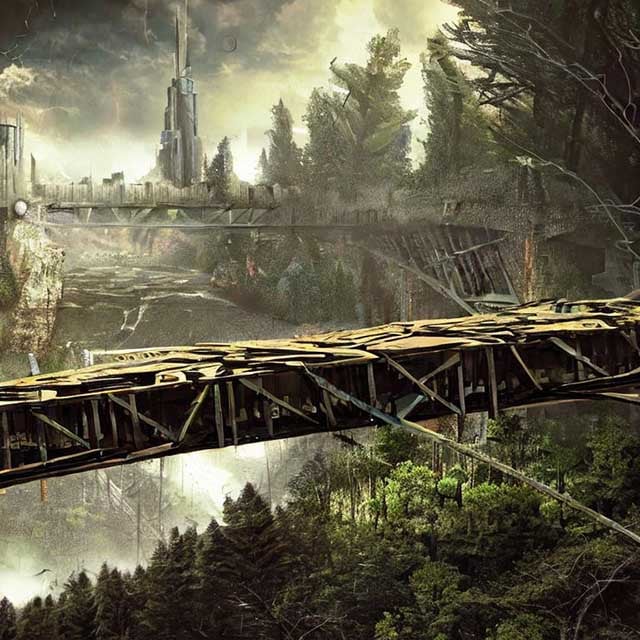 Our dependence on energy has a significant impact on biodiversity and the natural world. The majority of the world's energy, 92%, is produced from non-renewable sources such as oil, coal, and gas, which are significant contributors to global warming through their emissions. Only 8% of the world's energy production comes from sustainable sources, including nuclear, dams, and renewable energy sources.
Our dependence on energy has a significant impact on biodiversity and the natural world. The majority of the world's energy, 92%, is produced from non-renewable sources such as oil, coal, and gas, which are significant contributors to global warming through their emissions. Only 8% of the world's energy production comes from sustainable sources, including nuclear, dams, and renewable energy sources.
The production of non-renewable energy sources also involves the extraction of minerals and metals that are used in various industries, such as electronics. This practice of extracting these minerals is not sustainable, and metal shortages are expected to become a reality in the near future. This will have a severe impact on industries that rely on these metals and will put pressure on the remaining resources, leading to further depletion.
For example, the extraction of lithium, a metal used in batteries, is causing a decline in water levels in regions such as Chile, which is home to several species of cacti and other vegetation that are found nowhere else on the planet. The decline in water levels is putting these species at risk, highlighting the impact of energy dependence on biodiversity.
In conclusion, our addiction to energy is a major contributor to the biodiversity crisis and is having a negative impact on the environment and the natural world. It is essential to transition to sustainable energy sources to reduce the impact on biodiversity and ensure a healthy planet for future generations
Impact of Animal Farming
Animal farming is one of the major contributors to the biodiversity crisis, as it consumes large amounts of food and water, and produces methane, a potent greenhouse gas that exacerbates global warming. According to the Food and Agriculture Organization (FAO), the livestock sector is responsible for 14.5% of total greenhouse gas emissions, and this figure is expected to increase in the coming years.
In addition, animal farming is also a significant consumer of water resources, with an estimated 1,800 to 2,500 gallons of water needed to produce just one pound of beef. This puts a strain on water resources, contributing to deforestation and overfishing. For example, in South America, vast areas of the Amazon rainforest have been cleared to make way for cattle ranches, leading to the loss of valuable habitats and contributing to species extinction.
Impact on the Human Collective
The biodiversity crisis is not just an environmental issue, but it also has a significant impact on the human collective. The effects of the crisis, such as the financial crisis and societal unrest due to economic inequality, pose a growing risk to humanity. Despite the dangers posed by the biodiversity crisis, there is a lack of political will and public awareness to make the necessary changes to address this issue. Governments are not taking the necessary actions to reduce emissions, and a change from the ground up is unlikely to happen unless there is a concerted effort from all stakeholders.
Conclusion: Biodiversity Collapse
In conclusion, a collapse is inevitable, but there are steps that can be taken to prepare for a simpler, more sustainable future. This includes reducing waste, growing our own food, learning new skills, building communities, and most importantly, loving each other. By understanding the causes and consequences of the biodiversity crisis, we can work together to create a more sustainable future for all.
